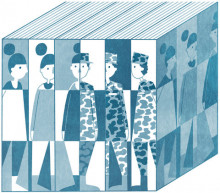No Time to Write?
Posted in Blog,Book News,Writing TipsApril 8, 2020Comments Off on No Time to Write?

Most people who write yearn for more of one thing. No, it’s not inspiration, or an uber-quiet office, or a better agent, or a more fabulous publisher. It is one thing alone: time!
That is why I was drawn to a recent article by Ken Wells, “How I Wrote Five Novels While Commuting.” It inspired me to make time. Here is how he begins:
When I took a job in New York City at the age of 44, I had work I loved, a growing family and a secret disappointment. I had always wanted to write a novel.
For eight years I’d dragged a manuscript around and fitfully pecked away at it. But mornings with my wife and young daughters were busy, and my job as an editor and writer at this paper was demanding. By the time I slogged home after eight to 10 hours at the office, I was usually too beat to write another sentence.
How would I ever find the time and energy to write?
My move came with a commute. I was captive to a train that shuttled me back and forth from my home in suburban New Jersey, to Hoboken, N.J., where I hopped a ferry to my job in lower Manhattan. The train ride was about 50 minutes each way.
A week or two into my commute, two things had become clear: I would be spending a lot of time on the train. And the ride was pretty comfortable. One day it hit me: Could I write a novel on the train?
I started doing calculations. If I subtracted, say, 10 weeks a year for vacation, business travel and sick days, that meant I’d have 42 weeks, or 210 weekdays a year, to work on my novel. If I could write two single-spaced pages a day, or about 1,000 words—which didn’t seem that ambitious—surely at the end of 12 months I could end up with close to a 400-page manuscript.











